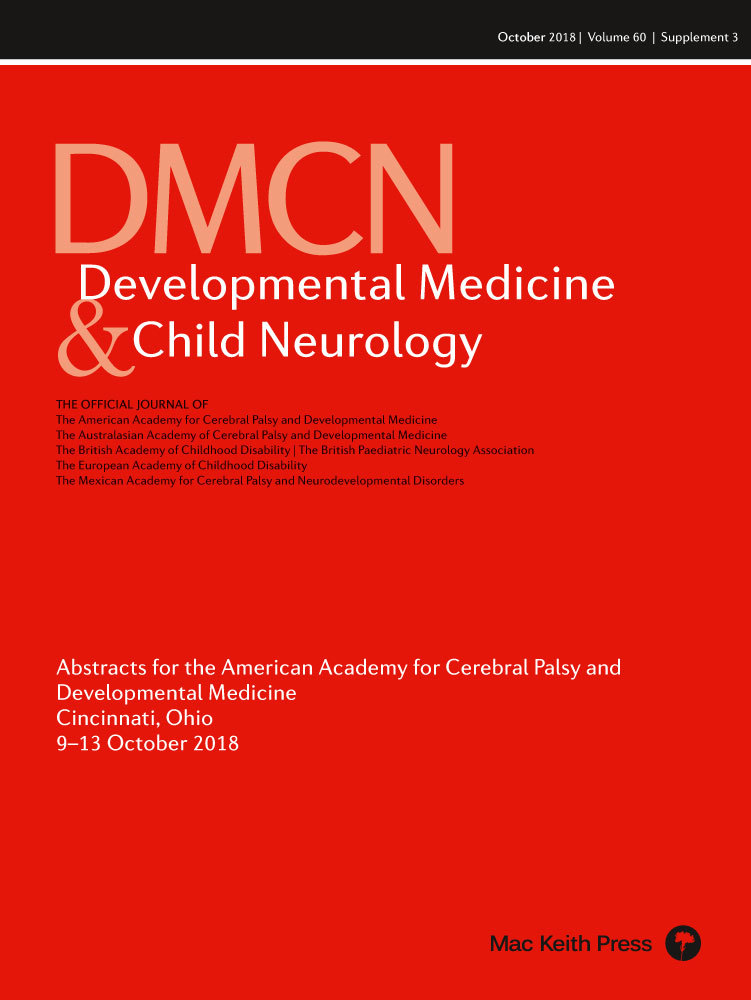Stability of the manual ability classification system in a longitudinal study of children with cerebral palsy
F9
A Burgess1, R Boyd2, J Ziviani1, R Ware3, L Sakzewski2
1The University of Queensland, Queensland, Australia; 2Queensland Cerebral Palsy and Rehabilitation Research Centre, The University of Queensland, Queensland, Australia; 3Menzies Health Institute Queensland, Griffith University, Brisbane, Australia
Background and Objective(s): To examine the stability of the Manual Ability Classification System (CS) in children with cerebral palsy (CP) aged 18 to 60 months across all functional abilities using new methods for assessing interrater agreement.
Study Design: Prospective longitudinal population-based study.
Study Participants & Setting: Two hundred and ninety-three children with CP (179 (61%) male) were recruited from birth years 2004, 2005 and 2006 to 2009 in the CP Child Study. Children were classified by CS, Gross Motor Function Classification System (GMFCS) and motor type. At the final 60 month attainment appointment (n=244), children were classified as CS Level I=114 (47%), II=61 (25%), III=24 (10%), IV=15(6%), and V=30 (12%); unilateral spastic CP=79 (32%), bilateral spastic CP=129 (53%), dystonic CP=12 (5%) ataxic CP=9 (4%), hypotonic CP=7 (3%), athetoid CP=8 (3%).
Materials/Methods: Participants entered the study at 18 months corrected age or later depending on time of diagnosis and referral, and measures were taken at 18, 24, 30, 36, 48 and 60 months of age. Stability of CS was examined using three methods: (i) proportion of specific agreement on each CS level over the different time points, (ii) a count of transitions from the initial CS rating to the final rating for each child, and (iii) the fraction of time which a child had a specified CS level.
Results: Sample size at each time point: 18 (n=78), 24 (n=134), 30 (n=174), 36 (n=219), 48 (n=231) and 60 (n=244) months of age. Participants were seen between one and six occasions (median=4) with a total of 1080 unique observations. Both specific agreement and within percentage rates indicate that CS level V had the highest degree of stability over time, followed by CS level I, then CS level II, while CS levels III and IV were least stable over time. The within percentages and the overall proportion of specific agreement for each level in descending order of stability over the study time period are: CS level V 85.61%, 0.85; CS level I 79.99%, 0.75; CS level II 66.93%, 0.68; CS level IV 57.27%, 0.49; CS level III 47.55%, 0.49. CS III and IV stabilised (specific agreement>0.7) at 48 months. Fifty-five percent of children initially rated CS level IV remained level IV at their final rating.
Conclusions/Significance: This longitudinal study provides information on the stability of the CS in children aged 18–60 months with CP. The results agree with the two previous studies which show that CS levels I, V and II have a degree of stability over time, whereas CS levels III and IV are not stable over time. This paper highlights that the choice of statistical analyses is very important in understanding and reporting data. Transition tables provide an unvarnished account of the frequency of the changes in CS levels which is easily understood. These findings can inform clinicians regarding prediction of manual ability. To be cautious when predicting future manual ability particularly for those children in CS levels III and IV is advisable.




